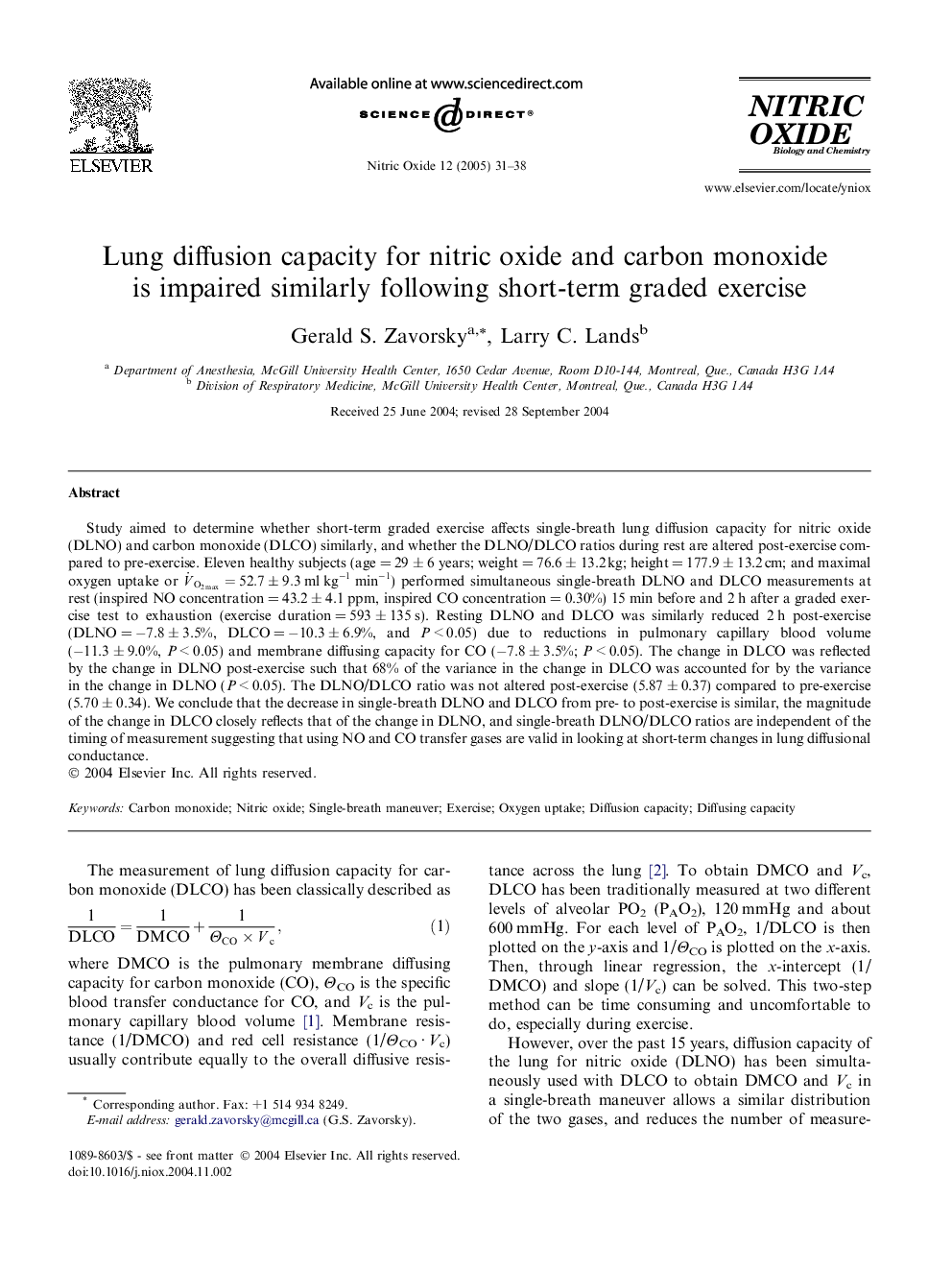| Article ID | Journal | Published Year | Pages | File Type |
|---|---|---|---|---|
| 10835417 | Nitric Oxide | 2005 | 8 Pages |
Abstract
Study aimed to determine whether short-term graded exercise affects single-breath lung diffusion capacity for nitric oxide (DLNO) and carbon monoxide (DLCO) similarly, and whether the DLNO/DLCO ratios during rest are altered post-exercise compared to pre-exercise. Eleven healthy subjects (age = 29 ± 6 years; weight = 76.6 ± 13.2 kg; height = 177.9 ± 13.2 cm; and maximal oxygen uptake or VËO2max=52.7±9.3mlkgâ1minâ1) performed simultaneous single-breath DLNO and DLCO measurements at rest (inspired NO concentration = 43.2 ± 4.1 ppm, inspired CO concentration = 0.30%) 15 min before and 2 h after a graded exercise test to exhaustion (exercise duration = 593 ± 135 s). Resting DLNO and DLCO was similarly reduced 2 h post-exercise (DLNO = â7.8 ± 3.5%, DLCO = â10.3 ± 6.9%, and P < 0.05) due to reductions in pulmonary capillary blood volume (â11.3 ± 9.0%, P < 0.05) and membrane diffusing capacity for CO (â7.8 ± 3.5%; P < 0.05). The change in DLCO was reflected by the change in DLNO post-exercise such that 68% of the variance in the change in DLCO was accounted for by the variance in the change in DLNO (P < 0.05). The DLNO/DLCO ratio was not altered post-exercise (5.87 ± 0.37) compared to pre-exercise (5.70 ± 0.34). We conclude that the decrease in single-breath DLNO and DLCO from pre- to post-exercise is similar, the magnitude of the change in DLCO closely reflects that of the change in DLNO, and single-breath DLNO/DLCO ratios are independent of the timing of measurement suggesting that using NO and CO transfer gases are valid in looking at short-term changes in lung diffusional conductance.
Related Topics
Life Sciences
Biochemistry, Genetics and Molecular Biology
Biochemistry
Authors
Gerald S. Zavorsky, Larry C. Lands,
